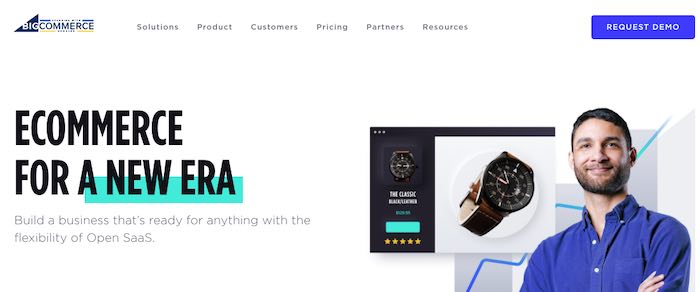I have worked with many ecommerce platforms over the years, including BigCommerce, Shopify, and Magento. I’ve learned that not all platforms fit every business.
The benefits of the right platform include improved efficiencies, better shopper engagement, and higher conversions. But migrating from one platform to another is a pain. The process is often messy and expensive. The wrong choice can tank an entire business.
Thus the decision requires much research and due diligence. Here are questions to consider.

Not every platform fits every business. BigCommerce is a popular choice, as is Magento, Shopify, SAP, Miva, and many others.
5 Platform Questions
What does your business need? Platform sales reps will often claim they have the perfect solution for your business. They may highlight features and stats and inundate your inbox. I once met with representatives from SAP, the platform. Their focus was to offer “solutions” without knowing what I needed. Many of those solutions were not relevant to my circumstance.
Before discussing features, a good rep will ask, “What do you need our platform to do?” If the rep cannot explain in 30 seconds how his platform addresses your needs, it likely won’t.
Can you manage it? Even if the platform has the right features, are you set up to manage it? Do you have the internal resources to maintain and scale it?
An otherwise perfect platform is pointless if you don’t have the time to use it.
What resources are needed? Consider the onsite and offsite resources required now and in the future. Must you hire a third-party development firm? I’ve worked with internal and external developer teams — with success and failures. I once managed an external team experienced in one system but inexperienced with our new one. I have also fired developer firms that lacked initiative.
Try envisioning what resources would be needed for a potential platform, recognizing the needs will likely change once you’re live.
Is it scalable? Can the platform easily support an ever-growing business? In 2020 I launched Lighting Reimagined, my current employer, on BigCommerce. A big attraction was the platform’s minimal, open-API structure that synced with many third-party apps, facilitating easy optimization and enhancement. Sure enough, within a year, we had received customer feedback for conversion improvements, which we implemented via BigCommerce’s app store.
Another scalability factor is the impact on your operations. Today I may generate 1,000 orders in a week. But what about 5,000? Will the system support that volume? Will its servers handle the traffic? Will my cart page lock up without warning? A platform with “99.99%+ up time” sounds attractive until you reach the 0.01% when your site goes down.
What is my budget? It might be last on the list, but your budget is arguably the most important. How much money can you spend on the platform? Businesses that can barely pay for Shopify cannot afford Magento or SAP.
All stakeholders need to agree on a budget. Starting with a minimal viable product and scaling it has saved a ton of money for me over the years. That’s what I did with Lighting Reimagined on BigCommerce. I spent what we needed when we needed it instead of paying for functionality up front that we may never use.




